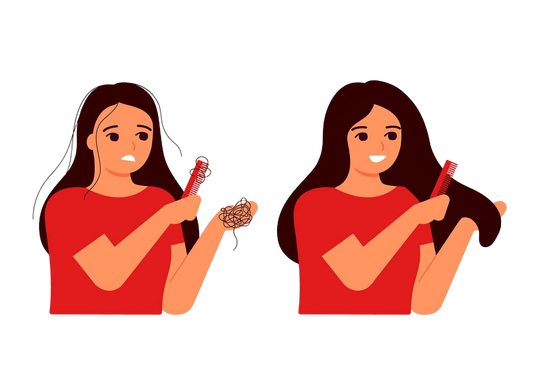Articles

Skin Care
Castor Oil for Low Porosity Hair: Can it Work Wonders?
Castor oil is a thick, viscous oil known for its hair-thickening and nourishing properties. However, its very thickness can be a drawback for low porosity hair.
Because of its heavy nature, castor oil may struggle to penetrate the hair cuticle and can even sit on top, creating a greasy buildup.
Understanding Low Porosity Hair
Low porosity hair has a tightly packed cuticle layer, the outermost part of the hair strand. This tight structure acts as a shield, repelling water and moisture-based products. While it protects hair from damage, it also makes it challenging to achieve deep hydration.
Castor Oil: A Heavyweight for Low Porosity?
Castor oil is a thick, viscous oil known for its hair-thickening and nourishing properties. However, its very thickness can be a drawback for low porosity hair. Because of its heavy nature, castor oil may struggle to penetrate the hair cuticle and can even sit on top, creating a greasy buildup.
Can Castor Oil Still Be Beneficial?
There might still be a place for castor oil in your low porosity hair care routine, but with a caveat. Here's how:
- Sealing Agent: After using lighter moisturizing products and treatments, a small amount of castor oil can be used as a sealant. This helps lock in moisture without weighing down the hair.
- Scalp Treatment: Castor oil's anti-inflammatory properties can be beneficial for the scalp. Massaging a diluted version onto the scalp can help soothe irritation and promote a healthy scalp environment.
Low Porosity Hair Care Heroes: Look for Lightweight Options
While castor oil might not be the star player for low porosity hair, there are other fantastic options:
- Lighter carrier oils: Argan oil, grapeseed oil, and jojoba oil are readily absorbed and provide deep hydration.
- Water-based products: Leave-in conditioners and deep conditioners formulated with water as the base deliver moisture without a greasy feel.
- Heat: Applying gentle heat, like a hooded dryer or warm towel, can help open the hair cuticle and allow for better product penetration.
Remember: Experimentation is key! What works for one person with low porosity hair might not work for another.
Understanding your hair's unique needs and trying different products, you can create a routine that keeps your low porosity hair healthy, hydrated, and thriving.

 Doctor Consultation
Doctor Consultation














